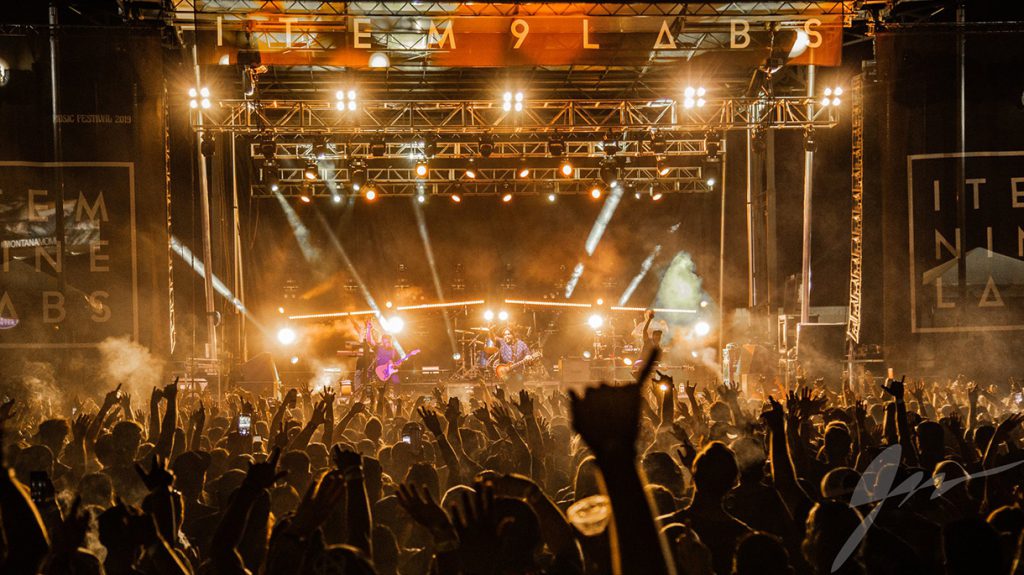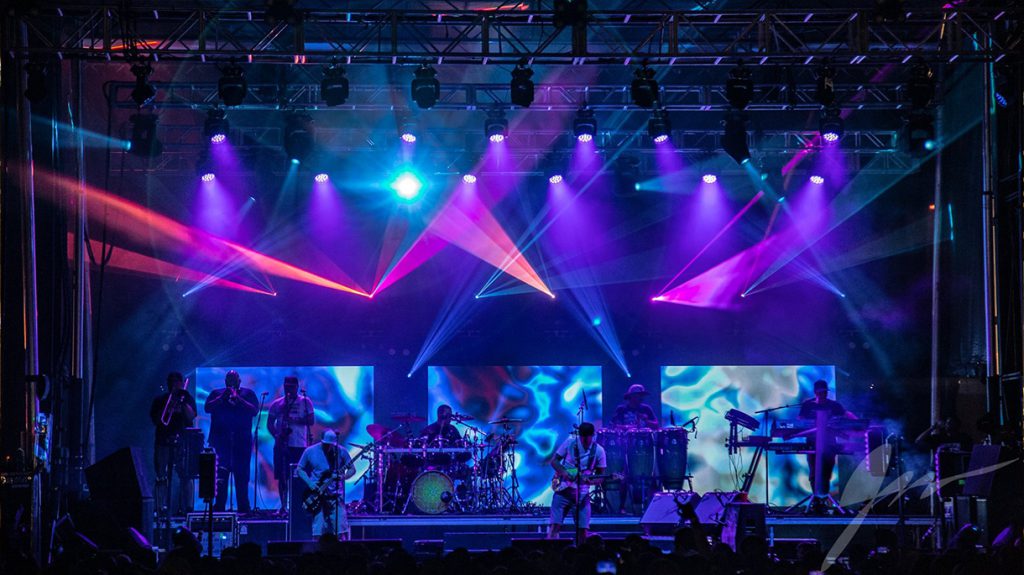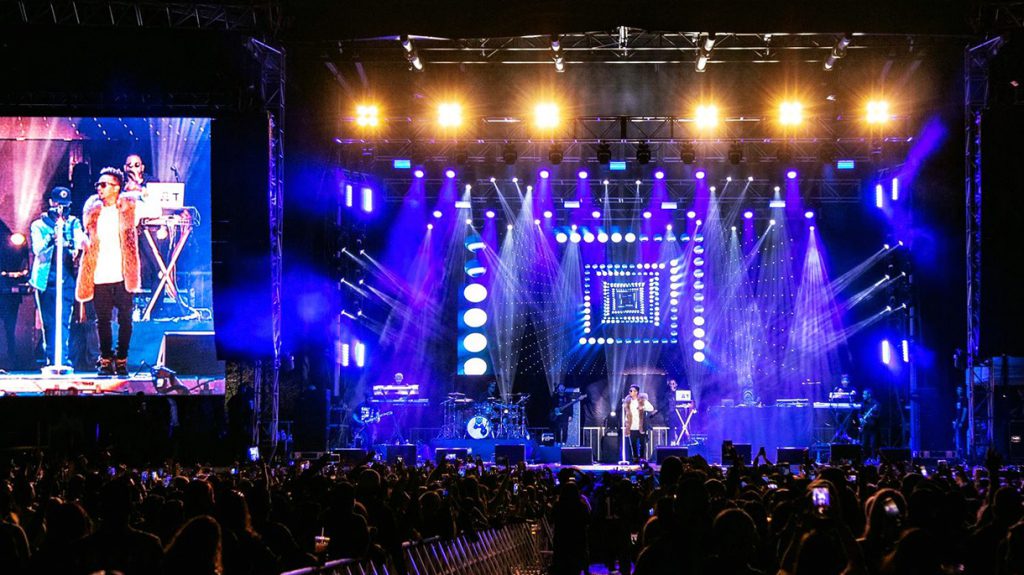Flexible For Festivals
Posted on June 4, 2019
When John Garberson designs a lightshow, he likes to push the creative envelope. Adding a new effect here, pixel mapping a fixture differently there, his goal is always the same: to come up with unique looks that support his client’s music.
About ten times a year though, when Garberson puts together a festival rig, he takes a different more measured approach. Rather than focusing on his own creative concepts, his efforts are devoted to making it as smooth and easy as possible for other LDs to achieve their vision on a new, and sometimes strange, stage.
The owner of Creative BackStage in Phoenix, Garberson has created rigs for more than 125 festivals over the years. LDs for artists ranging from Kanye West, Tiesto and Calvin Harris to Linkin Park and ZZ Top have created shows with his lights.
Building a rig that can seamlessly accommodate the shows of four or five different LDs on the same stage, all while remaining true to the theme of a festival (and its budget!), requires a unique set of skills that involves engineering and design along with a dash of diplomacy.
As the festival season kicks into high gear, we spoke to Garberson about how he cultivates these skills, and about his insights into the intricate balancing act that is flexible festival lighting.
You’ve set up quite a few festivals. So, what do you view as the key to putting together a successful festival rig?
“At the end of the day, it all comes down to two main things. The first is hitting that sweet spot that balances the creative demands of the traveling LDs with the theme and budget of the event. The second is having enough flexibility in your rig so there’s a smooth flow from LD to LD…your rig has to offer a lot yet be streamlined to accommodate different styles of programming. When you do this, you get a great sense of satisfaction that all your hard work was worth it, especially when you see the crowd’s reaction!”
Some festivals you’ve worked on have had artists from a wide variety of musical genres appearing on stage. How do you meet this challenge when designing a festival rig?
“That all depends on the riders, but in most cases we tend to put a mix of washes, spots, blinders, strobes, beams and follow spots. From there they can choose what to use or not. This works out really well when we have the budget to do this. We get a mix of different lighting looks throughout the festival.”
Can you walk us through the design process for a festival rig?
“Once I get the go ahead to start the process, I gather up a few things, like stage type and size, in/outside, and the capabilities of that stage for flying. Then I need to get any band riders, mainly the headliners and the info on the festival to see what I’m dealing with on theme. If it’s a straight forward festival, then I do the four truss layout, adding in the wash in the first three trusses, add blinder to the front and spots to the mid, and third leaving the back truss for banners.
“Then, depending on the riders, I will start to drop in the visiting LDs’ requests to change up the plot to fit their needs in. Sometimes I will listen to the music or type of music to help me design. Depending on the size of the festival, the design process can be done in one session for a basic package or up to weeks to design for the larger bigger artists ones.”

You’ve also designed EDM as well as rock festivals, any difference in the prep there?
“EDM is a whole other beast in designing, I tend to redesign up to three or four times or more for those festivals. With EDM, you always crave a different look. It’s not like a band festival where you have three trusses of lights for five bands, and are able to create five different looks. EDM is also about the look of the stage and how the lighting, video trussing, stage, props all flow together. Of course, you always have a budget, so I tend to push for more on the budget with EDM, because I need to be a tad different, or maybe I want to add in new lighting fixtures or effects.”
Do you talk to visiting LDs to get feedback after the festival?
“Yes, we do. Visiting LDs get to see all that is there, from the good to the bad to the new to the old. Because we only do work in Arizona, we get to learn what others are up to and maybe a new trick on a controller or something like that. Years ago, when I wanted to take the jump from 120K rigs to LEDs, we wanted something new, and at that time the Chauvet R2 Washes were out maybe less than a year. So we asked LDs if they think they would be rider friendly and the feedback is a major reason we got the R2 Washes, which have been on almost every festival we do. So, feedback is great, good to bad, it’s a way to grow and learn.”
Do you ever make last minute changes in a festival rig based on visiting LD feedback?
“On occasion, if we have an old rider and the new one requires a different controller or maybe spots added to the front, or at times they are carrying a ground package and we have to figure out added power needs. However, we tend to try to advance the lighting rig ahead of time.”
A lot of festivals start during daylight hours and go into the night. How do you account for this big variation in ambient light?
“What is nice about being in the LED era is that back LED pars can be seen in the day time, so we use them more as eye candy to add to the stage for daylight hours. If you have the back LED pars and then toss in some pyro-fogger jets, an LD can rock a daytime show. Back in the days of the 120K rig it was more limited to flashing and chasing the bright colors, and then only the deeper colors could be seen. Now if your lucky to have an outdoor stage, which has back and side walls and can keep the haze within the stage, you can do amazing things during daytime shows.”
There are many times when you put together a festival rig, knowing that you yourself are never going to use it. Instead, it’s going to be used entirely by visiting LDs. How does it feel creating something that is going to be used by others, but not you?
“Festival rigs need to be easy on the traveling LDs; you need to give them enough washes, spots and blinders to get the job done, and depending on the theme, maybe add in beams and strobes. Plus, follow spots, if required. I’m happy if the LDs are happy; we try to make their life easy and try not to over complicate things.”
When you design a festival rig, do you think “this is what I would like if I were designing this festival?
“The first things I look at are always practical. First, does one of the headlines require their lighting plot to be fulfilled? What is the budget I have to work with? What type of artists are going to be preforming, and the size of the stage and timing, meaning setup to strike times? Any artist lighting request that must be met is first on the drawing board, at times we have to merge their rig into the festival rig. So, to answer your question, when there are visiting LDs involved, I try to put myself in the position of thinking what they would want, rather than what I would choose if it were my show.”
How about when you create and run your own show; how does that differ from building a festival rig for other LDs?
“With festival rigs we need to think about the visiting LDs. Half the time, they will be patching and programing their show from the patch and plot we give them. You do not want to get crazy with expending the modes to the highest levels in these situations. But when I am in control, I can cut, lose, or add extra gear, and try new things, so it’s a slightly different experience. Both are fun though, and in the end both are doing the same thing – supporting the music with light.”
